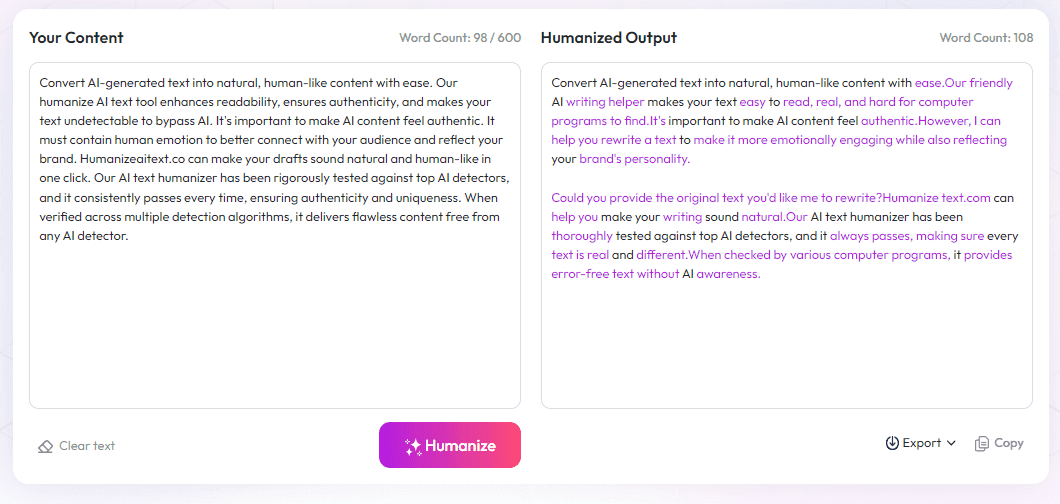Table of Contents
Many writers find nonlinear storytelling tricky — it’s easy to get lost or lose your readers along the way. But with a few simple tips, you can make your stories clear, engaging, and exciting to follow. Keep reading, and you'll discover how to build a structure that guides readers smoothly through twists and turns without feeling confusing or chaotic.
If you stick with these ideas, you'll learn how to organize overlapping timelines, differentiate perspectives, and use storytelling devices thoughtfully — all while keeping the story flowing. By the end, you'll be ready to craft stories that keep readers guessing and eager to connect the dots.
Here's a quick look at what’s coming: clear story structure, making each scene meaningful, connecting themes across timelines, distinguishing perspectives, using devices like flashbacks wisely, and making your readers feel like part of the puzzle.
Key Takeaways
Key Takeaways
- Use clear markers like chapter titles (“Six Months Later”) and recurring motifs (a specific sound or image) to help readers follow shifts in time and perspective easily.
- Establish rules for your timelines, such as “Now” versus “Then,” and stick to them, possibly with visual cues like color coding or symbols, to keep your story organized and understandable.
- Make each scene meaningful—advance the plot or develop characters—so your story doesn’t feel disjointed, and keep readers engaged with well-chosen details.
- Introduce overlap and contrast by switching perspectives or themes across timelines, helping deepen understanding without confusing your audience.
- Review your story often, adjusting transitions and scenes to ensure clarity, and ask for feedback to make sure readers can follow the twists and turns easily.

When it comes to writing nonlinear stories, the key is to guide readers smoothly through complex timelines without causing confusion. The most effective tip is to use a clear structure that helps readers easily follow shifts in time and perspective. This often involves establishing **anchor points**—such as characters' clothing, familiar settings, or recurring motifs—that serve as signposts during jumps in the narrative. For instance, referencing a character’s distinctive jacket or a specific holiday scene can indicate a change from present to past or future, making transitions less jarring.
Applying a well-defined framework for your timelines is also crucial. Define rules like “Now” versus “Then” or specific markers such as chapter headings, color schemes, or symbols. This helps both you and your readers stay oriented, especially in stories that weave multiple threads or perspectives. An example is using chapter titles like “Six Months Later” or “Five Years Before” to help readers navigate your story's sequence effortlessly.
Using different storytelling devices thoughtfully can elevate your nonlinear narrative. Flashbacks are popular because they reveal character backstory or key plot points, but overusing them may disrupt flow. Instead, integrate other devices like overlapping timelines with themes or motifs, helping readers piece together the story naturally. For example, alternating viewpoints from different characters’ perspectives can deepen emotional understanding without confusing the chronological order.
Making every scene count is vital. Each moment should serve a purpose—either to advance the plot or to develop a character—regardless of when it occurs in the timeline. This prevents your story from feeling fragmented and keeps the reader engaged. Carefully choosing which details to reveal or withhold builds suspense and encourages your audience to think critically about how the timeline fits together.
Finally, review and refine your narrative for clarity. Read through your story multiple times, checking if transitions feel natural and if the structure supports reader comprehension. Adjust scenes that may seem out of place or confusing. When done well, a nonlinear story can challenge assumptions and deepen emotional impact, making it memorable and compelling.
For more tips on constructing nonlinear narratives, seeing real-world examples and exercises can be helpful. Consider exploring resources on (https://automateed.com/how-to-write-in-present-tense/) or discovering (https://automateed.com/which-story-premise-is-most-clearly-a-classic-tragedy/) to help sharpen your narrative techniques.

9. Utilize Anchor Points and Signposts to Improve Story Clarity
Using consistent anchor points, like a character’s favorite scarf or a specific background noise, helps readers stay oriented during jumps in time.
Incorporate recurring motifs, such as a particular color or sound, to subtly cue shifts without confusing your audience.
Clear signposts—like chapter labels (“Six Months Later,” “Flashback to High School”)—serve as helpful markers that ground readers in the story’s structure.
This way, even when the timeline twists and turns, readers can easily follow along and stay emotionally connected.
10. Develop a Consistent Framework for Nonlinear Timelines
Establish rules for how your story moves through time—deciding what constitutes “Now,” “Then,” or “Before.”
Create an outline that maps out major timeline shifts to ensure your narrative maintains coherence.
Consider integrating visual aids like color coding or symbols to distinguish different timelines visually.
This consistency allows you to juggle multiple threads without losing track of the narrative’s overall flow or confusing your readers.
11. Use Data and Research to Add Depth to Your Storytelling
In 2025, readers are increasingly craving content that combines storytelling with solid facts and insights.
Incorporate relevant data or studies to support your narrative, making it richer and more credible.
For example, blending personal stories with statistics about mental health can deepen emotional resonance and provide broader context.
This hybrid approach makes stories more compelling and helps readers connect on both emotional and intellectual levels.
12. Frame Nonlinear Narratives Around Themes to Aid Cohesion
Organize your story around key themes—like memory, trauma, or redemption—to create a natural flow despite the timeline jumps.
Each scene or chapter can then highlight different facets of the theme, regardless of when it occurs chronologically.
Linking scenes thematically helps readers understand the story’s deeper message without getting lost in the complexity.
For example, a story about childhood might alternate between past and present by emphasizing the theme of loss or growth.
13. Challenge Audience Expectations to Boost Engagement
Playing with non-linear structures can surprise readers and keep them guessing.
Purposefully withhold key details or reveal them out of chronological order to create mysteries that encourage puzzle-solving.
This approach pushes readers to actively piece together the story, increasing their investment and recall.
Be mindful, though, to balance complexity with clarity—too much confusion can hinder engagement rather than boost it.
14. Leverage Psychological and Emotional Depth in Your Nonlinear Stories
Non-linear storytelling excels at conveying psychological states, memories, and trauma.
Use jumps in time to mirror how the mind naturally processes memories—shifting suddenly or fragmenting details.
Showcase characters’ emotional journeys by revealing moments from different points in their timeline, illustrating growth or setback.
For example, a character’s flashbacks to a traumatic event can deepen the story’s emotional impact and offer insight into their current behavior.
15. Consistently Review and Refine Your Nonlinear Structure
Regularly step back and read your story to identify confusing sections or abrupt transitions.
Ask beta readers or editors to give feedback specifically on the clarity of your timeline shifts.
Adjust scenes or signposts as needed to improve flow and understanding.
The goal is to craft a story that challenges but never confuses—where every jump in time adds depth without losing the reader.
FAQs
Use clear headings and consistent cues to mark shifts in time or perspective. Structuring scenes logically and providing subtle reminders helps readers stay oriented without confusion.
Focus on scenes that push the plot forward or reveal character traits. Every scene should add value, avoiding unnecessary details that may slow down the story.
Use overlapping themes and motifs to link timelines. Cross-reference events or symbols to create subtle connections that guide readers through the story’s layers.
Use distinct visual cues like formatting or color. Clearly state the perspective or timeline at the start of each section to avoid confusion for readers.



